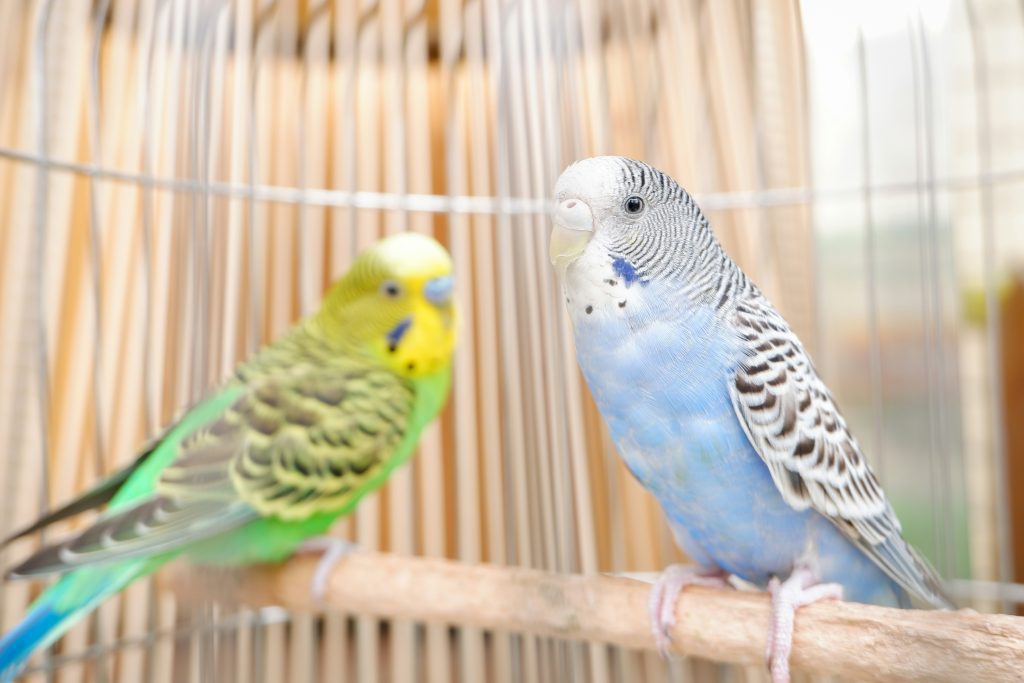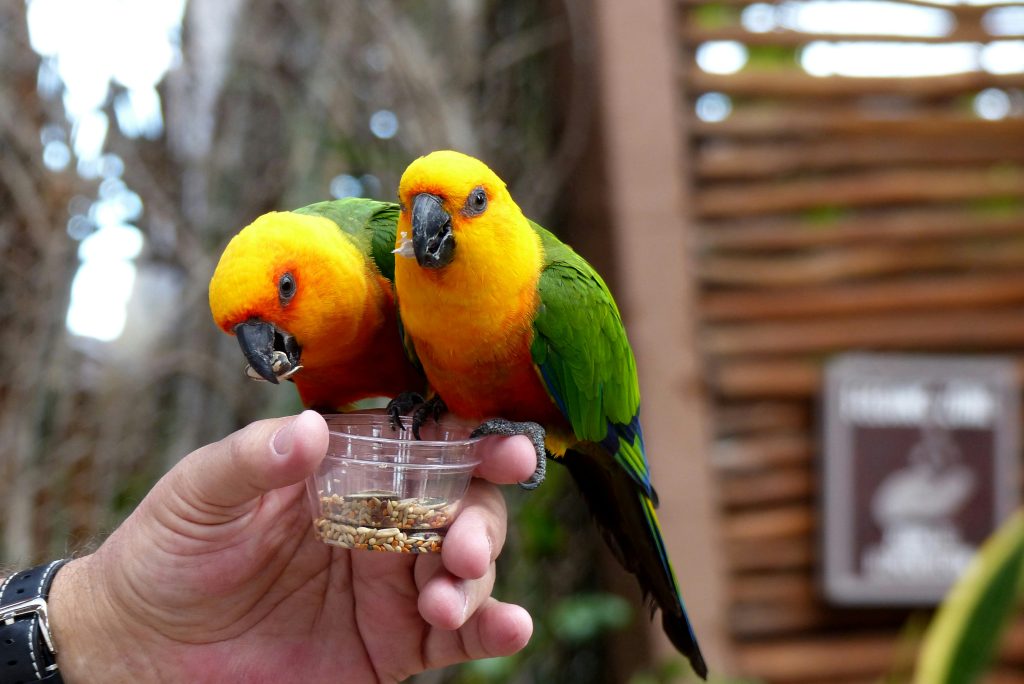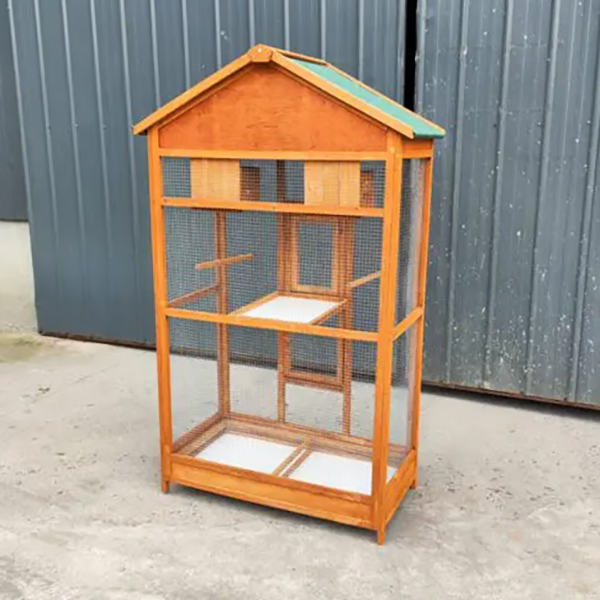Guide to Keeping Pet Birds
Keeping birds as pets
Birds can make lovely pets, but it’s important to know how to care for them – especially since caring for birds varies quite significantly from caring for a dog or a hamster. It’s crucial that your pet bird receives the greatest care if you want them to be a happy, healthy member of your family. Let us walk you through the fundamentals of raising pet birds, including entertainment, food, and even healthcare.
Your pet bird’s home
Starting with the basics, it’s crucial to take your pet bird’s living habits into account when determining the enclosure’s height and width. For instance, perching birds need enough height, width, and space to be able to fly around comfortably, in which case an aviary would be an appropriate solution.
Parrots, on the other hand, prefer to climb, so a tall enclosure with several perches would be great for them, giving them space to both explore and take in their surroundings. When it comes to flying parrots, it’s crucial that they have space to flap their wings (in this case, figuratively) and move around, whether in their enclosure or secure portions of the environment.
Another important aspect of keeping your bird happy is making sure they are acclimated to their environment and have a nice habitat. When designing a room for birds, there are various considerations that should be made. Every species will have different preferences, but generally speaking, the more room you can give an animal in an enclosure, the better.
No matter what kind of bird you have as a pet, the flooring in their enclosure should permit scratching since this is a typical behaviour for birds. Straw, wood shavings or tidy sand are common options for bedding. Additionally, the flooring must be smooth, easy to clean, and impenetrable to pests or predators so that they cannot tunnel beneath it and enter your bird’s enclosure. It’s crucial to give your bird nesting boxes that are also simple to clean and access if it’s going to lay eggs.

Diet essentials
Starting with the essentials, your pet bird should always have access to clean drinking water in a dish that is challenging to tilt, regardless of the species. Make sure you change the water every day and provide areas for the birds to bathe or swim. Because other animals or birds might infect your pet through its dish with harmful diseases or parasites, if your bird is outdoors, make sure that their water source is isolated and challenging for other birds to access.
Modern bird feeding frequently includes pellets, which are used to cater to the nutritional demands of various species and are frequently available in a range of sizes, from small crumbles to large kibbles. Pellets provide many advantages, including guaranteed balanced nutrition, minimal waste and freshness.
You shouldn’t feed your birds particular foods. Different birds are sensitive to different substances, so please always check with a veterinarian or a trusted source before adding any new components to your pet’s diet. Some of the most common foods unsafe for birds are:
- Avocado
- Onion
- Garlic
- Leek
- Chives
- Decorative plants
Moreover, if you decide to switch your bird’s food (i.e. from seeds to pellets), make sure to do so gradually over time to give your pet time to get used to the new diet.

Basics of bird health
The level of veterinarian care or input your bird needs will vary depending on a number of variables, including their past health history, the number of birds you are keeping, and the environment they are maintained in.
Typically, birds benefit from yearly health inspections, regular deworming and sanitation. For larger species living alone, routine health checks are crucial so that problems can be identified and treated right away.
If you see any of the following in your pet bird, it might be time to see a veterinarian:
- Apathy and change in behaviour
- Loss of appetite
- Dull plumage, scratching, plucking out feathers
- Unusual droppings
- Any sort of a discharge from eyes, beak etc.
- Coughing
- Sudden aversion to touch
- Limping, protecting a wing
It’s best to utilize a compact, spotless transport cage when taking your bird to the doctor. Fresh waste should be left in this cage, and the animal should be brought to the veterinarian with a sample of its usual feed and information about its living conditions. The more details you can give your veterinarian about your bird’s routine, the more equipped they will be to treat and diagnose your pet.
Having fun with pet birds
Although different bird species enjoy different kinds of activities, the advantages of keeping your bird occupied are universal. Keeping your pet bird busy is advantageous for a variety of factors: it enhances their general emotional health and temperament, can aid with boredom relief, and as a result lowers the likelihood of self-harming behaviours. Plus, it’s fun to watch! There’s a plethora of bird toys available, and many birds enjoy playing with their owners or even family dogs or cats.
Take a look at our hand-crafted aviary!
- Two doors – large one for cleaning and a smaller one for feeding the birds
- Green waterproof asphaltic roof
- Fire preventative and waterproof baseboard
- Easy to clean with a slide out tray at the base
- Comes with perches and sleeping boxes
- Outdoor, environmentally friendly protection lacquer has been applied
- Dimensions: 108 x 58 x 182cm / 42.5 x 22.8 x 71.6 inches (L x W x H)
- Net weight / Gross weight: 19.5 / 24kg (42.9 / 52.9lbs)






